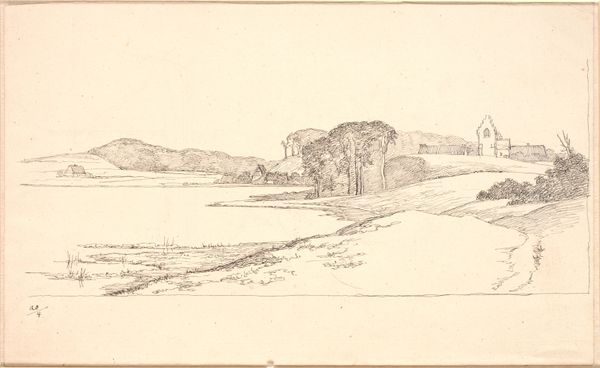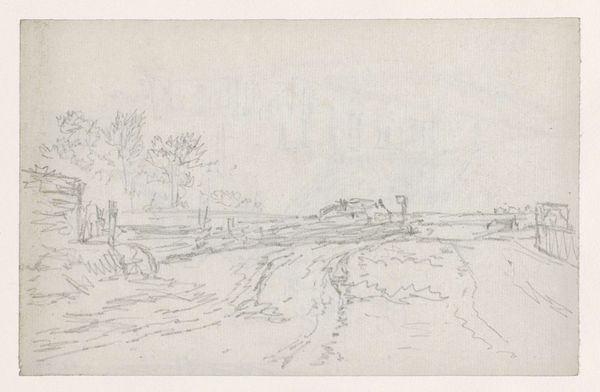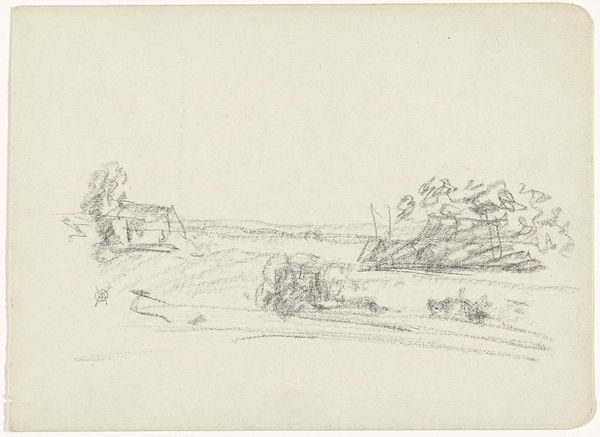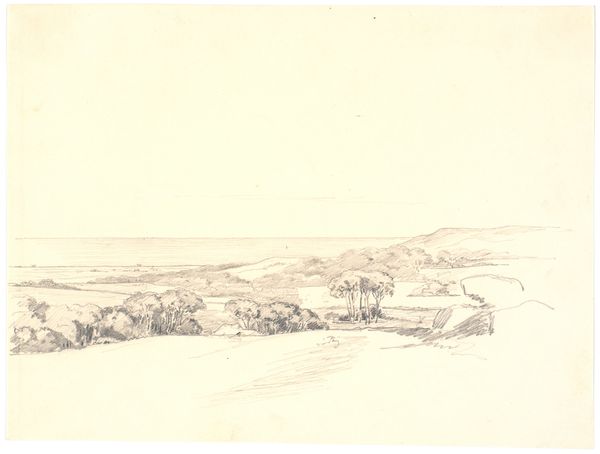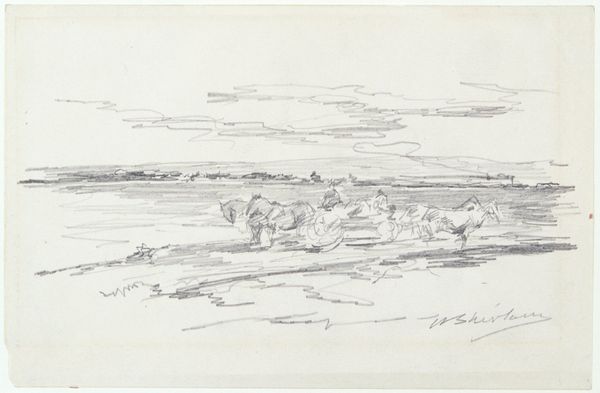
drawing, pencil
#
drawing
#
pencil sketch
#
landscape
#
pen-ink sketch
#
pencil
#
line
#
realism
Dimensions: height 101 mm, width 166 mm
Copyright: Rijks Museum: Open Domain
Curator: Before us we have “Duinlandschap” or “Dune Landscape,” a pencil drawing attributed to Guillaume Anne van der Brugghen, likely created sometime between 1821 and 1891. Editor: It feels quite desolate, doesn’t it? A whisper of land beneath a vast, empty sky. The muted tones and the sheer sparseness create a sense of melancholy, almost. Curator: Notice how van der Brugghen uses the humble pencil to capture a wide vista? The subtle gradations, the delicate hatching to build up the dunes and the suggestion of distant structures. The linear elements seem to guide us gently across the land. Editor: I am more drawn to the apparent insignificance of humans here, literally overshadowed by the natural elements. Considering the societal views of landscapes in the 19th Century, did these works reflect broader concerns about humanity’s place in an ever-changing industrializing world? Curator: The composition lends itself to that. The dominance of the sky indeed dwarf any man-made element here. I also feel there's tension in the contrast of meticulous rendering of the foliage and the relatively stark simplicity of the ground itself. Is it intentional contrast to suggest cultivated lands reclaimed by nature, and thus of temporal and shifting dynamics? Editor: Fascinating! Perhaps the drawing’s very execution points to that struggle too—the visible, almost hurried pencil strokes reveal this human attempt to understand this shifting terrain? Did the piece resonate with contemporary audiences given the period’s increasing emphasis on environmentalism and conservation? Curator: While difficult to pinpoint the exact contemporary reception, the genre itself indicates a cultural embrace of nature as something both sublime and intimately knowable. By studying such details within van der Brugghen's linework, can reveal even broader societal preoccupations of the time. Editor: Seeing how a simple landscape could resonate on different levels – personally and socio-historically—gives you a renewed appreciation. Curator: Indeed! By just dwelling on those individual linear formations, you get such varied emotional and intellectual layers being unearthed.
Comments
No comments
Be the first to comment and join the conversation on the ultimate creative platform.
